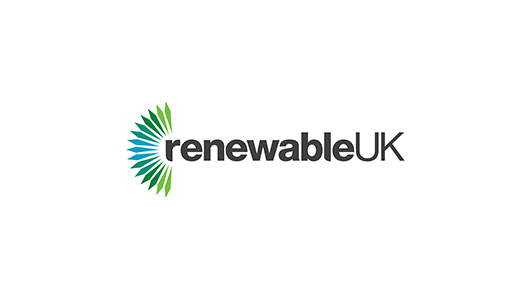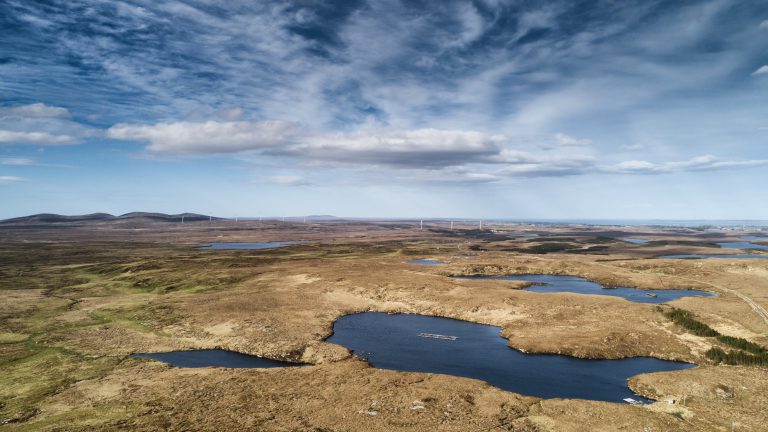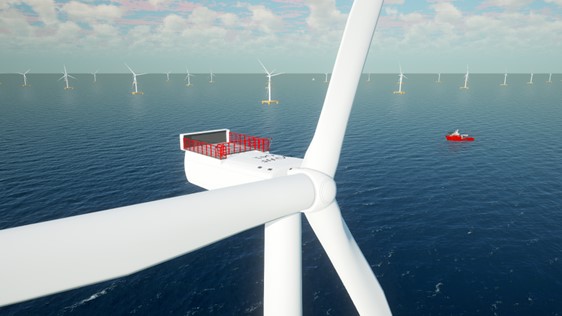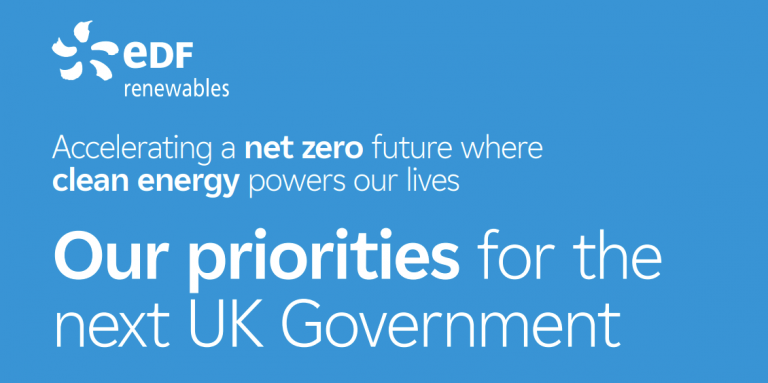As we gear up to energise our first solar projects in Ireland, JP Wallace, our Senior Business Development Manager at EDF Renewables Ireland, reflects on what needs to change in the industry for solar to play a significant role in helping the Government achieve 80% of electricity from renewables by 2030.
A version of this article first appeared in the Irish Independent.
Ireland might seem an unlikely candidate to be Europe’s next great solar energy powerhouse. After all, while Ireland is famous for many reasons, great weather is not one of them! When the writer Rachel Friedman said that “being a weatherman in Ireland is the biggest scam going,” she was reflecting an unfortunate reality that the weather here is largely predictable insofar as it’s frequently wet and seldom sunny.
Fortunately, while that might make booking a staycation a riskier proposition, it doesn’t mean we should count Ireland out when it comes to solar energy. While more solar power is naturally generated in sunnier climates, the key element for energy generation from PV cells is the level and brightness of the light. In Ireland, obviously these both reach peak levels during the summer, but what is less often appreciated is that, even on cloudy winter days, there is sufficient light to generate significant amounts of energy. Have misperceptions about our climate and solar energy contributed to the slow rollout of solar PV on domestic rooftops in Ireland?
Solar PV take-up in Ireland
The Irish Government currently aims to have 250,000 rooftop installations completed by 2030. That’s roughly 1,800 every month. The current level is closer to 150 per month.1 Clearly a massive amount of work remains to be done with regard to solar PV microgeneration.
But the same can also be said when it comes to commercial solar projects. In 2020, Ireland had the second lowest installation of solar PV power in the EU after Latvia, at just 92.8 MW of installed capacity.2 Across the water, the UK has deployed over 13,500 MW of solar capacity, providing it with 5% of the UK’s total year-round electricity requirements.
Ireland’s solar targets
Recently the first grid-scale solar project in Ireland was connected to the national grid. At the opening, Minister for the Environment, Climate and Communications Eamon Ryan said it would be the first of many such projects and indeed EDF Renewables Ireland will shortly energise three more solar farms in Wexford and Kilkenny, which between them will power the equivalent of 6,600 homes. These projects form the vanguard of solar in Ireland and show its potential role in reshaping Ireland’s energy mix.
Of course, the energy supply situation has changed drastically in the last couple of months due to Russia’s invasion of Ukraine. Prior to the war, the Climate Action Plan 2021 committed Ireland to a target of 2.5 GW of solar by 2030.
However even in the pre-war scenario that was viewed by many as quite conservative. The Irish Solar Energy Association (ISEA) has called for greater national ambition with the aim of having 6 GW of solar by the end of the decade. This would equate to 20% of all our power needs.
Within the industry this is seen as entirely achievable. One of the main reasons being that solar is relatively quick and easy to deploy. Being a late adopter might also be to Ireland’s advantage in this case, allowing us to reap the benefits of improvements in technology over the last decade. That is certainly what the 66 successful solar projects in the recent Renewable Electricity Support Scheme (RESS) auctions will be hoping.
Challenges in deploying solar in Ireland
However, solar development in Ireland is not without its challenges, and these projects will need to avoid the pitfalls encountered by roughly 40% of the solar projects that were successful in RESS 1 auctions in 2020 but are now not progressing.
While inexperience and supply chain issues have played a part, one of the main reasons for this high attrition rate is the high costs associated with developing solar projects here in Ireland. Commercial rates are, on average, higher than those in many European countries, and costs associated with the transportation of any electricity generated, and the operation and security of the transmission system, can also be significant.
In addition, one of the consequences of Russia’s invasion of Ukraine is that many European countries have increased their targets for renewable energy deployment. The UK and Germany in particular have dialled up their plans for solar development significantly. While this is very positive for the industry in the long term, it also means Ireland will face intense competition in the short term for limited resources and workers with the requisite skills.
The cost of solar
Ireland is looking to generate 80% of its electricity from renewable sources by 2030. If solar is to play its part in achieving that target then vital action must be taken to drive down costs and ensure as many solar projects as possible progress to completion.
For example, ISEA estimates that Ireland is paying €73 for every megawatt-hour of solar energy generated, while Spain is paying just €32. While climate plays a part, one of the main reasons for the difference is the very high network charges that apply here.
Irish solar operators are paying up to €26 more than their peers in related charges for every unit of electricity they put on the grid. That’s not good for consumers who are paying the fourth-highest electricity charges in Europe or for encouraging the development of solar energy in Ireland.
Tackling these underlying issues is the best way to alleviate some of the pressure on consumers hit hard by the energy crisis, and harness Ireland’s dormant solar potential. If we can do that, and turn plans for a vibrant solar sector into reality, those weather jokes won’t be on us anymore.
- DECC_MSSConsultation_ISEA-Response_2021-02-18.pdf (irishsolarenergy.org)
- 20th annual overview barometer – EurObserv’ER (eurobserv-er.org)

Senior Business Development Manager at EDF Renewables Ireland






